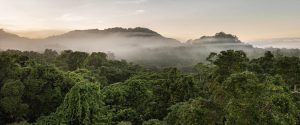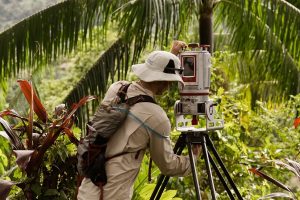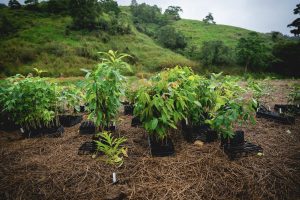Quantifying Rainforest Carbon

Rainforest Rescue is lucky to have the support of some incredible businesses and foundations. Our partners not only inspire us with a shared vision for a more sustainable future, but their financial support paves the way for practical solutions to protect and restore precious Daintree rainforest for flora, fauna and generations to come.
We, as a society have become increasingly aware of how our actions are affecting the world we live in. Carbon emissions are the direct outcome of human activities such as burning fossil fuels, deforestation, cement production and industrial processes, contributing to the dangerous warming of our planet’s climate. Over the past few years, as the global carbon market has begun to thrive, some of our supporting businesses have shown interest in quantifying what their financial contributions to Rainforest Rescue mean in terms of carbon sequestered from our atmosphere.
To begin our carbon measurement journey, a little extra help was needed. Wild Country Environmental Fund, a foundation run by Georgina and Michael, two nature lovers who regularly contribute to projects that support flora and fauna in Australia’s wild places, generously agreed to grant $5000 towards this goal.
With Georgina and Michael behind us, we were ready to approach eco-physiologist and soil scientist Dr. Alex Cheesman of James Cook University (JCU) with the crunchy question:
How do we measure carbon in both our protected and restored rainforest?
Dr. Cheesman, alongside a team at ArborMeta designed a strategy using Light Detection and Ranging (LiDAR) technology to measure the above ground biomass of regenerated rainforest of varying ages in the Daintree region. They made use of these measurements along with the Full Carbon Accounting Model (FullCAM) method to estimate the level of carbon sequestration in our rainforest vegetation growth.
“The application of modern technology to one of the world’s oldest rainforests offers exciting new opportunities to accurately monitor how carbon is sequestered into restored forests” – Dr. Alex Cheesman

LiDAR scanner used by ArborMeta to measure distances and create detailed digital models of rainforest in the Daintree region. Image credit: ArborMeta
Some of our major business partners, BioPak, Klorane, and the Klorane Botanical Foundation (KBF), joined this collaboration and using this carbon modelling method, Dr. Cheesman could estimate the carbon each company had locked away in forest biomass in the last year, based on their financial contributions towards protected and planted rainforest. Results showed that BioPak sequestered 2,227 tonnes of carbon (Or the equivalent of taking 2917 medium sized cars off the road for a year!) Similarly, from their contributions, Klorane and the KBF sequestered 350 tonnes of carbon (458 cars off the road!) This process has been of great value to both companies and taken their sustainability reporting to the next level – adding credibility, transparency and greater depth for their readers.
“This is a superb outcome. It goes to show that if you invest in a science-based approach and effectively communicate the evidence, the conversations that result can be transformative. We are thrilled to be supporting Rainforest Rescue grow their impact- a team at the top of their game” – Georgina and Michael, WCEF
This exciting multi-faceted collaboration between Rainforest Rescue, JCU, Wild Country Environmental Fund, BioPak, Klorane and KBF is just the beginning of our journey into the realm of quantifying carbon. Thanks to the initial kick-start of funding from Wild Country Environmental Fund, we are hoping to expand this offering to many more business partners as a show of our appreciation for everything they help us to do to Protect Rainforests Forever – To give something back to the ecosystems which provide so much for us, and uniting our efforts to tackle the problem of climate change facing all of humanity.
To read more, check out BioPak’s sustainability report and Klorane Botanical Foundation’s blog update.

Rainforest seedlings ready to take root in the soil and begin the important role of storing carbon from the atmosphere
Want more good Rainforest news in your life?
Subscribe to our eNews | Follow us on Instagram | Like us on Facebook | Subscribe to our YouTube channel
Help Protect Rainforests Forever
Donate to Protect Rainforests Forever | Become a Rainforest Guardian for as little as $2 a month | Partnership Options

